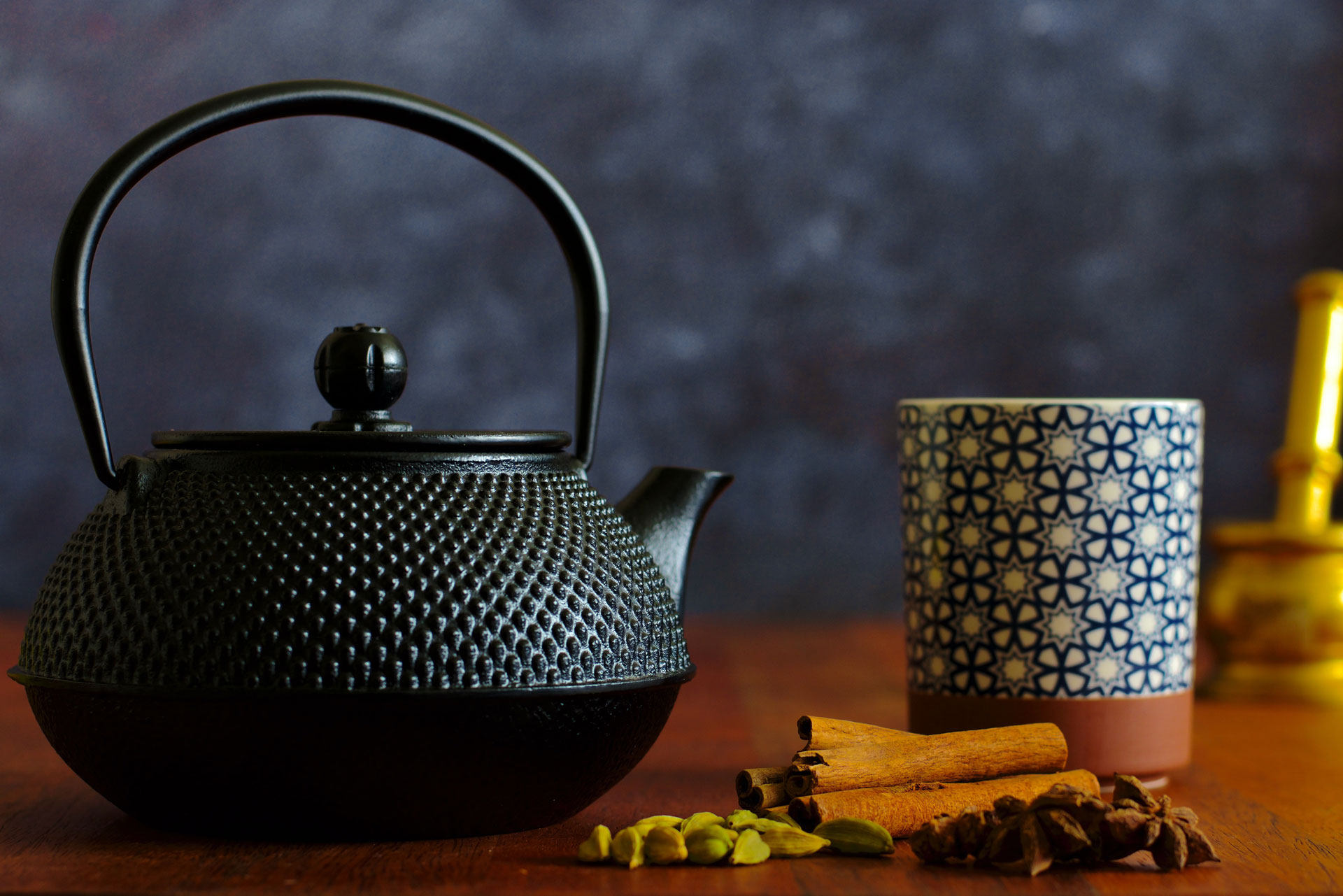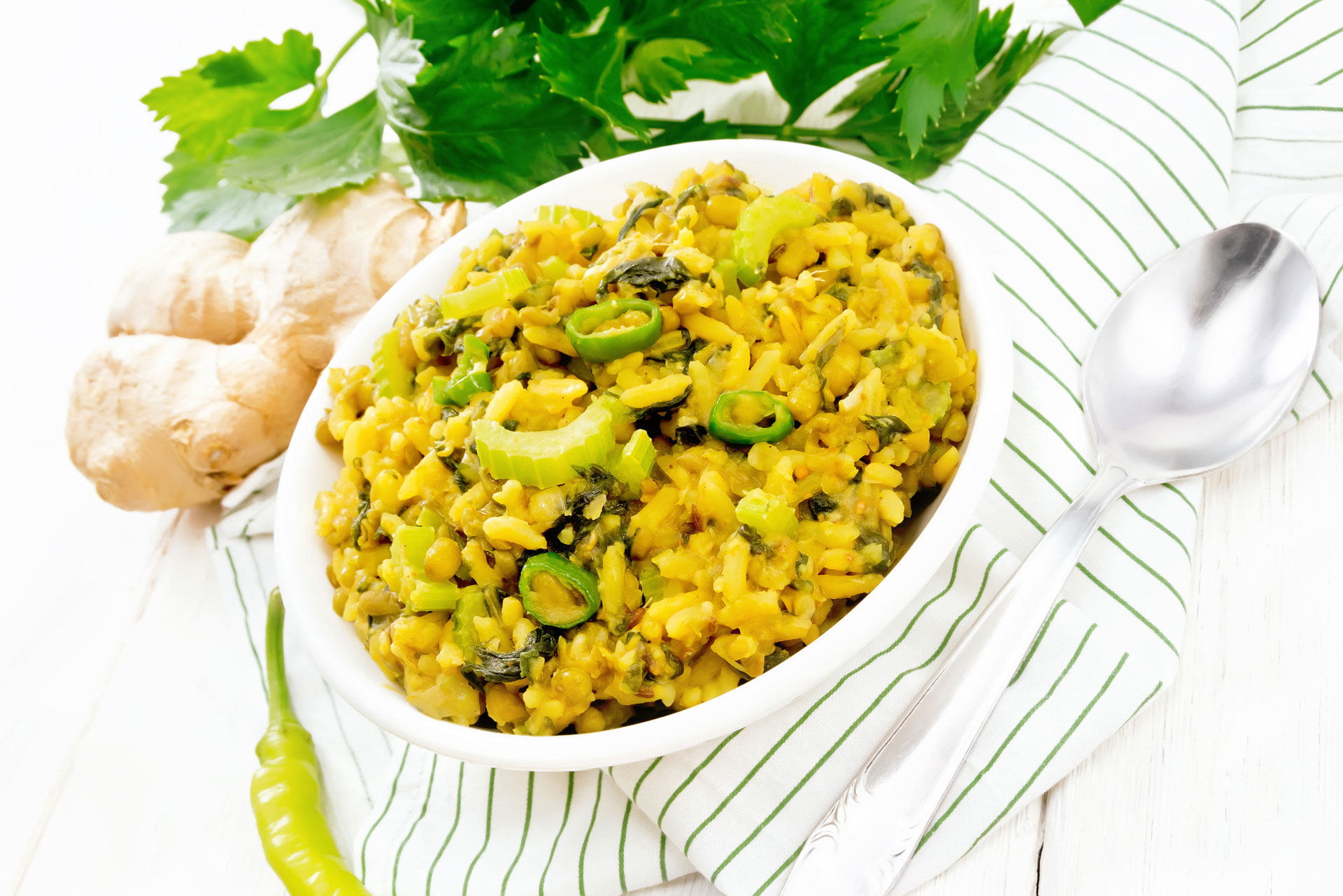How To Do An Ayurvedic Cleanse
By
4 years ago
How to heal your gut

Jenya Di Pierro, Herbal Medicine Practitioner and founder of Cloud Twelve Club, advises on healing your gut with a little help from the East. Here’s how to do an ayurvedic cleanse.
In Ayurveda, properly functioning digestive tract is key to all health. What we don’t properly digest and assimilate with the help of digestive fire or ‘agni’ turns into toxic buildup or ‘ama’. It’s a sticky, thick, wet substance that blocks channels of circulation (nutritional, nervous and mental). Signs or ‘ama’ include tongue coating, bad breath, tiredness after eating, lethargy and mental fog. Over time, ‘ama’ undermines body’s natural ability to defend, repair and heal itself and therefore regular cleanse is one of the main therapeutic principles of Ayurvedic philosophy.
Ayurvedic cleanse focuses on stimulating digestive fire and eliminating toxins with the help of diet, fasting, exercise, breathing practices and herbal remedies. All protocols need to take into account our individual body type or ‘dosha’ – vata, pitta or kapha, however genaral recommendations outlined below will be relevant to all of them.
Herbal Therapy

In Ayurveda ‘like increases like’, therefore hot and drying spices, such as cayenne, ginger, long pepper, garlic and cinnamon will be best at stimulating digestive fire. These herbs have been traditionally used to enhance appetite, digestion, relieve indigestion and abdominal pain.
To further support ‘agni’ it is recommended to eat warm meals, drink hot water, avoid cold and cooling things, ice, salads in winter, eating without hunger, eating too much for your digestive capacity.
In order to clear ‘ama’ we should add bitter and pungent spices to our diet. The bitter flavour reduces, dries and drains ‘ama’. The pungent flavour destroys and digests it. Herbs with these properties include ginger, guduchi (an ayurvedic herb you can buy in powder or capsule form), turmeric, long pepper (which has a slightly hotter flavour than ordinary black pepper), nutmeg, garlic, asafetida, cumin, fennel and neem (can be bought in capsule form). On a physiological level, these herbs support enzyme production, improve absorption and work on gentle detoxification by stimulating bile flow and liver function.
Kitchari Diet
Kitchari diet involves eating freshly prepared kitchari dish two to three times per day. Kitchari is usually made from rice, dal and spices in a warm vegetable soup. It is nutrient rich, easy to digest and hearty enough to give your body the energy it needs to improve the strength of agni (the metabolic fire) – which is essential for optimal health. Try it for three to 10 days.
How To Make Kitchari

Kitchari – Getty Images
- Simmer 1/3 cup of mung dal, 2/3 cup basmati rice, in 3-4 cups of water for 45 minutes.
- Add ¼ tsp organic turmeric, 1 tsp ginger, 1 tsp cumin and 1 tsp coriander.
- Add 1 tsp of ghee.
- Add seasonal vegetables: spinach, peas, seaweed, carrot, leek, celeriac or shiitake mushrooms.
If you struggle with monodiets you can rotate steamed organic seasonal vegetables to give your meal another flavour.
It is fascinating, that in India people do not think of kitchari as a detox recipe, it is their staple lunch dish along with various curries full of vital spices and other health boosting nutrients.
For those of us in cold climates, Kitchari has an added benefit of warming up our body, supporting our defence mechanism against infections and giving us much needed comfort on a chilly day. In fact, this is the only cleanse that should be done during cold months of the year, because when our body is not sufficiently warm, we do not have optimal metabolism to digest raw foods, fast or doing other restrictive diets.
Exercise

Ayurveda supports all types of exercise as long as it is beneficial for our dosha. To release toxins efficiently, the circulatory system must be invigorated. However, we should never push ourselves too far to exceed the limit of our energy. This is especially true during the cleanse which is a time of rebalance and rest for the body and therefore high intensity exercise should be avoided even if we feel more energized than usual.
Clean the Mind

Harmony in the body is greatly dependent on the balance in the mind.
Pranayamas are breathing exercises developed by the ancient yogis for purification of body and mind. Prana is the universal life force. It is the vital energy needed by your physical and subtle layers of your being. Prana flows through thousands of subtle energy channels, called ‘nadis’. The quantity and quality of prana, and the way, in which it flows through the nadis, determine your state of mind.
A regular practice of simple, deep breathing can lead to reduced anxiety and depression, stronger immunity, lower/stabilised blood pressure, increased energy levels, muscle relaxation, decreased feelings of stress and mental exhaustion. In addition, breathing can have an immediate effect on diffusing emotional energy, so there is less reactivity to our emotions.
Breaking the cleanse correctly is almost as important as the cleanse itself. It is critical to end your detox gradually, slowly incorporating your regular foods back into your diet over the course of at least a week. It would be beneficial to maintain some of the protocols and carry on with them them in your daily life, as it is much healthier for our bodies do less but regularly, than a lot but infrequently.
Ayurveda is about understanding who you are and the living in harmony with your own unique constitutional balance. It’s an inspiring and rewarding journey and so worth it!
Jenya Di Pierro is a professional herbalist and a naturopath. She also founded Cloud Twelve, London’s leading wellness and lifestyle club. @jenyadipierro
DISCOVER MORE:
An Expert’s Guide to Good Gut Health / How To Help Your Immune System For Optimum Health






